Great White Sharks Are on the Move—4 Warning Signs to Stay Out of the Water
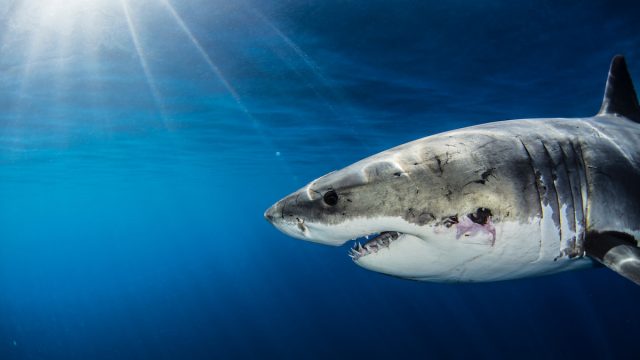
For most people, the idea of a great white shark conjures notions of needing a bigger boat or reflections of a certain Super Bowl halftime show gone (hilariously) wrong. For others, great white sharks are the scariest thing on the planet. Over the past few weeks, they’ve been showing up in locations like Florida and New Jersey—and in heretofore unseen numbers.
To be clear, your chances of getting attacked by a great white shark in the wild remain vanishingly slim—about one in 11.5 million, according to Julie Andersen, global director of brand for PADI Worldwide, as well as a founder of Shark Savers, Shark Angels, and Fin Free. (Andersen says the odds of you dying from said attack are closer to one in 264 million.)
Still, it’s always better to be safe. Here’s how to know whether a great white shark may be in the water, plus some advice on what to do if you see one.
READ THIS NEXT: 8 Life-Saving Tips to Avoid a Shark Attack.
Why sharks are migrating.
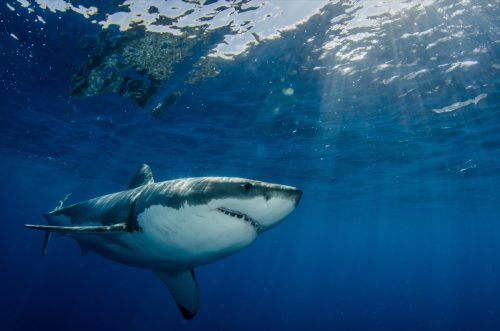
While it’s “tough to know if shark populations are truly growing,” says Andersen, it’s clear the behavior and travel patterns of great white sharks have shifted in recent years.
“Shark migrations typically revolve around the change in ocean temperatures and seasons,” Andersen explains. “The unusual thing we’re seeing is how far north sharks are venturing—Maine, Nova Scotia, Northern California. Basically, if there’s a coastline in the state, you have a chance to run into a white shark at this point.”
Andersen attributes the growing frequency of great white sightings to a shifting tide in matters of preservation. As of this writing, the United States has approximately 1,000 marine protected areas—essentially aquatic areas protected by conservation—which account for roughly a quarter of the country’s waters, according to the National Oceanic and Atmospheric Association. This results in more food for sharks, which naturally results in more sharks showing up.
So, how to know if there are great white sharks in the water?
1
You see a lot of other fauna.
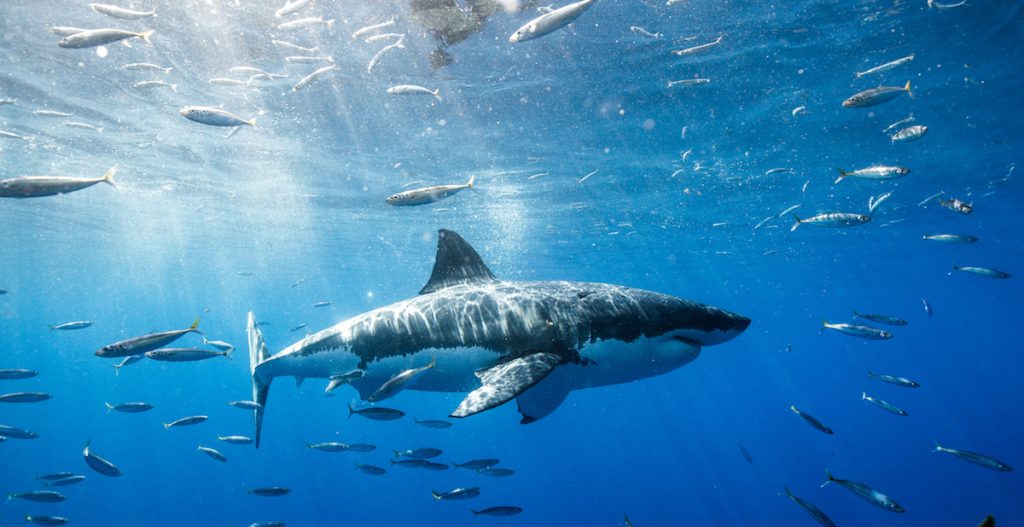
What Best Life reported in 2021 remains true today: Sharks will go where their food is. Seeing a crowd of birds diving into the water, for instance, means there’s likely a lot of fish—in other words, shark food. And if there’s a lot of shark food in one location, there’s a higher chance of a shark being there.
“Stay out of the water if there are large shoals of fish at the surface or a lot of marine activity,” Andersen says. “[And] avoid areas where people are actively fishing or spearfishing.”
2
A shark-sighting app is alerting you.

Many sharks these days—including great whites, the linchpin of many conservation efforts—are tagged, identified, and digitally tracked. So, Andersen points out that you can use your phone to keep appraised of any sharks that may be in your area.
OCEARCH has a shark-tracking app that’s available on both the App Store and Google Play, as does the Atlantic White Shark Conservancy. And, of course, you can set up Google Alerts. If you’re worried about seeing a great white shark in the water, consult these digital means.
For more safety advice delivered straight to your inbox, sign up for our daily newsletter.
3
Or a lifeguard is.
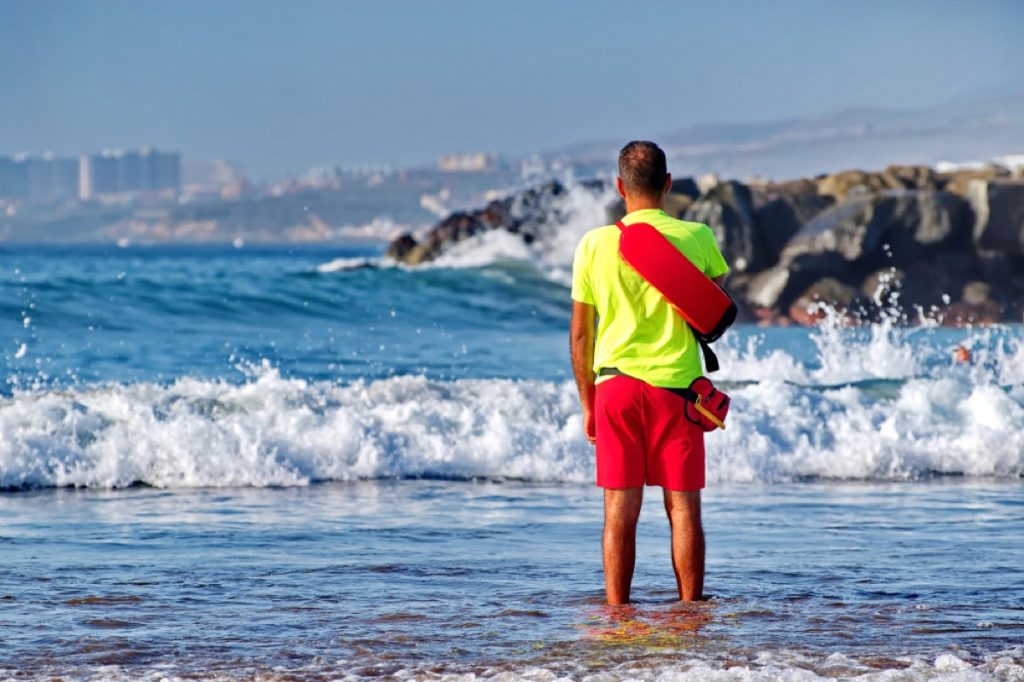
The other way to know about great white shark sightings is among the oldest methods in human existence: Just ask.
“Check with local lifeguards and marine conservation groups,” Andersen says. “Talk to water users like fishermen and surfers.”
And if you want to be extra cautious, always swim at a guarded beach. In the U.S., seaside towns tend to post roundups of guarded beaches on a jurisdictional basis. For example, Long Beach Township, New Jerse maintains a list of currently guarded beaches in and around town. And remember that many public beaches don’t hire lifeguards until Memorial Day or even mid-June (when schools typically let out).
4
It’s not daytime.
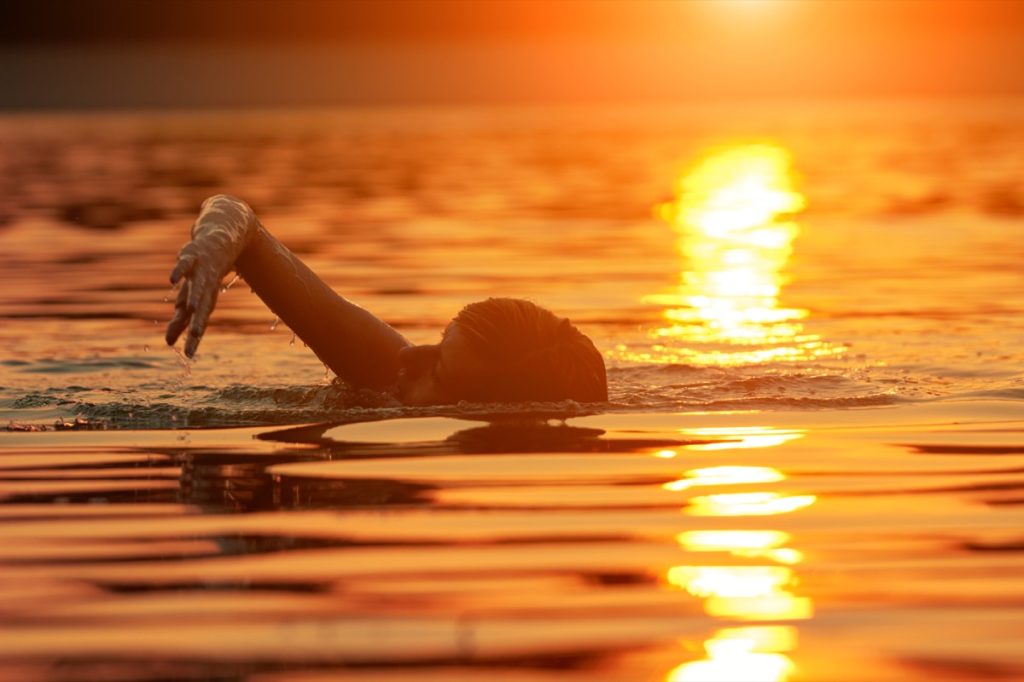
As Best Life previously reported, sharks tend to feed more at dusk and dawn. As Andersen explains, there’s reduced visibility when it’s not daylight.
So, between the increased likelihood of running into a shark and your reduced chances of actually seeing said shark, if you live in a region with increased great white sightings, it’s wisest to avoid swimming outside of daytime altogether.
What to do if you see a great white shark.
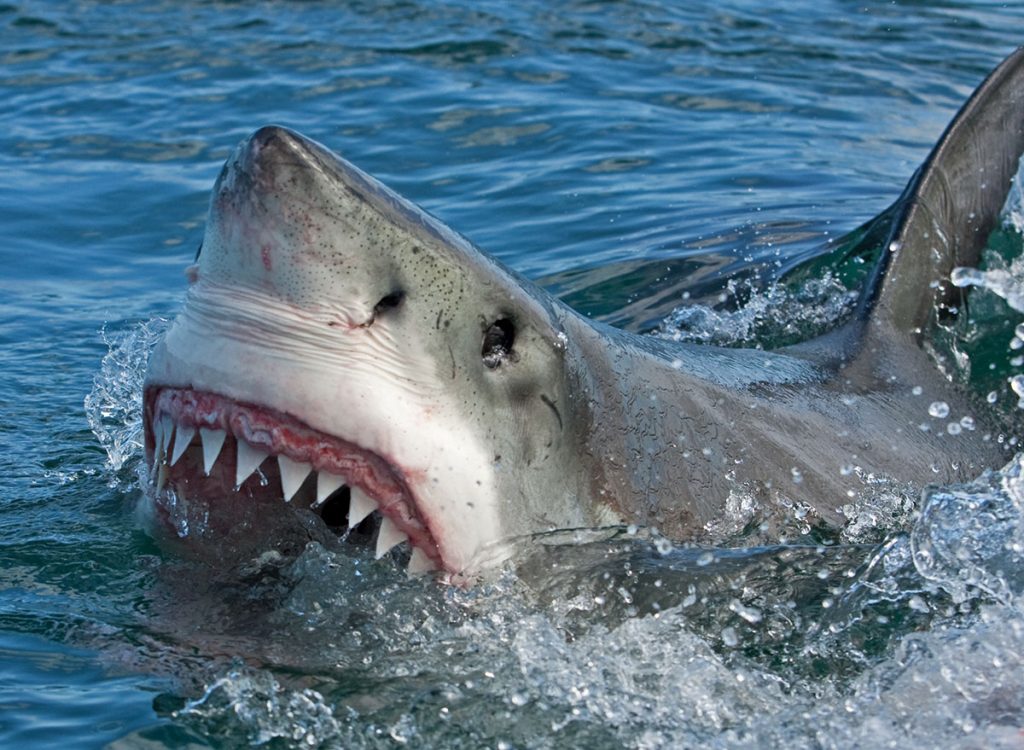
If you do end up seeing a great white shark, the number one thing you should do is stay calm. “Maintain eye contact, and make sure the shark sees you,” Andersen said. “You wouldn’t run from a lion or a bear, right? If you happen upon a shark in the wild, do your best to keep calm and keep your distance. Remember, sharks truly don’t want to eat people.”